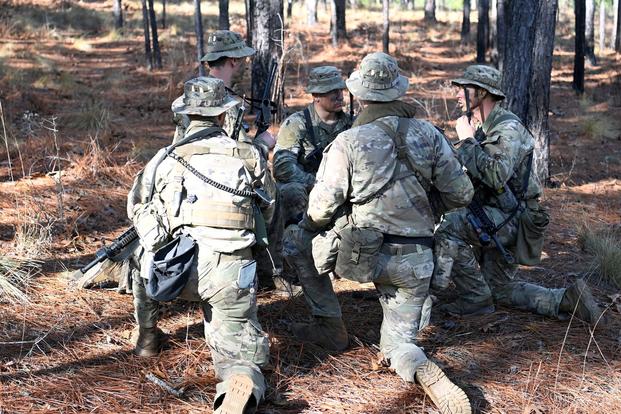One of the best parts of preparing for Army or Marine Corps special operations programs is that their boot camps are very tough physically. The follow-on training is also challenging, so the future special ops candidate experiences little deconditioning, unlike in Navy or Air Force training pipelines.
Indeed, the Army and Marine Corps have a progressive fitness system that, with some added specialty training, can help you prepare for your Special Forces, Rangers, Marine Raiders or Force Reconnaissance training simply by being a good soldier or Marine.
Here is a question from a young man who’s preparing for the Army Special Forces training pipeline but realizes he has hurdles before attending Special Forces Assessment training:
I am leaving in three months for Army Basic Combat Training (BCT) and was wondering what you recommend for me to do to stay in shape for selection while I am in BCT, Advanced Individual Training (AIT), and airborne school. Thanks – Sam
Sam, thanks for choosing to serve. First, you should focus on using these last three months to minimize or eliminate any physical weaknesses. Improving your strength, power, speed, agility, endurance (run/ruck), muscle stamina, grip, and flexibility/mobility are all necessary for your profession.
Some basic tests you should be familiar with include the Army Combat Fitness Test (ACFT) and the Special Forces Preparation Course (SFPC), which is an advanced version of the old Army Physical Fitness Test (APFT) that adds more running miles, rucking, and pull-ups. Ensure you can crush these events at all times, even when undergoing advanced training.
After all that, you will eventually find yourself at the SFPC to help you prepare for the hardest part of the journey: the Special Forces Assessment and Selection (SFAS). Candidates must meet the minimum standards on the PFT – pull-ups, five-mile run, and 12-mile ruck march with 65 pounds – to continue, but you do not want to flirt with any minimums when preparing for a special forces selection.
Minimum scores (recommended):
- Push-up: 57 (80+)
- Sit-up: 66 (80+)
- Two-mile run: 14:24 (12:30 or faster)
- Pull-up: 6 (15-20)
- Five-mile run: 40 minutes (35 min or faster)
- 12-mile ruck with 65 pounds: 3 hours (2:30 or faster)
You will also take the Occupational Physical Assessment Test (OPAT) and the Army Combat Fitness Test during your BCT/AIT and be required to run, PT, and do a flexed arm hang for 10 seconds at Basic Airborne School.
But the most important piece you need to work on is your current weakness during these next three months. If you are an endurance athlete, lift more to become more durable with rucking and equipment carry, as you will end up carrying 100 pounds or more some days during selection. If you are already strong, you may need to improve your running pace and total miles so you can handle the timed events in runs and rucks.
My advice is to do a 12-week cycle of block periodization in which you focus three weeks on your weakness (endurance, calisthenics, or strength training) followed by one week of maintenance of your current strengths. Then, while in Army training, add to your training days if you have time or energy to mix in a few calisthenics or extra miles of running or rucking.
Chances are you won’t need to add much, as the training pipeline will build you up with each new level of training. But remember, focus on any weaknesses with your limited time to add more training to already a tiring day.
Want to Learn More About Military Life?
Whether you're thinking of joining the military, looking for fitness and basic training tips, or keeping up with military life and benefits, Military.com has you covered. Subscribe to Military.com to have military news, updates and resources delivered directly to your inbox.

















